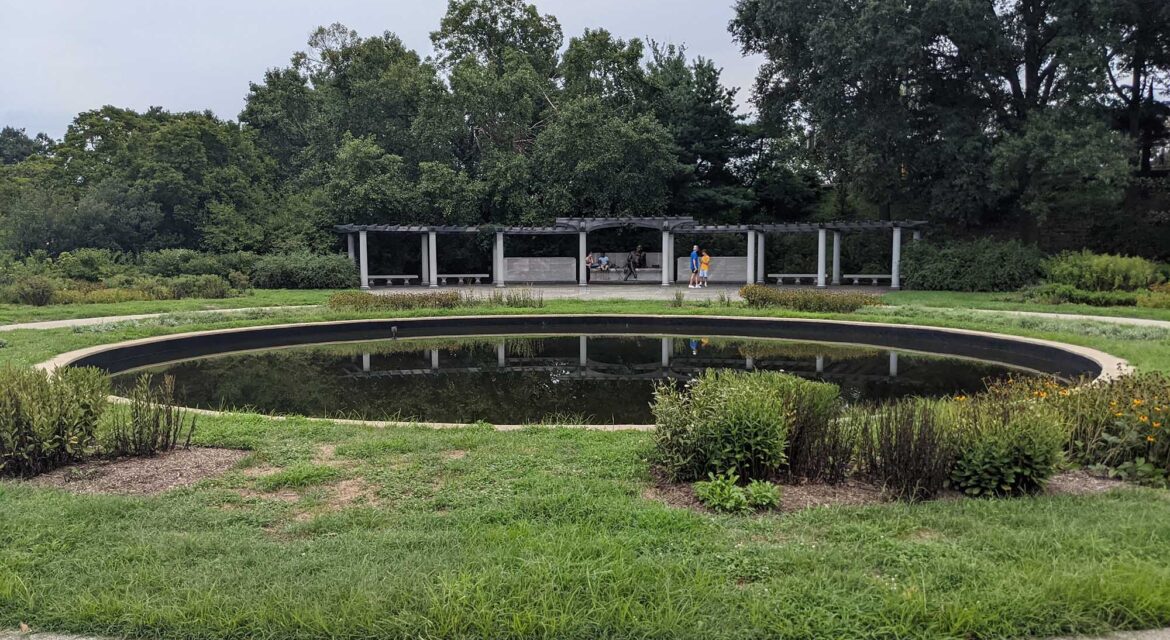 George Mason is recognized as one of the Founding Fathers of the United States, even though he was one of only three delegates who refused to sign the Constitution because it did not abolish slavery. Because of this, he has been referred to as the “reluctant statesman,” which is further reflected in the subdued nature of the George Mason Memorial located in Washington D.C. While the memorial was designed to reflect Mason’s unpretentious character, the ordinary features and unkempt layout highlight the incredible potential that could be realized at site and for the legacy of Mason.
George Mason is recognized as one of the Founding Fathers of the United States, even though he was one of only three delegates who refused to sign the Constitution because it did not abolish slavery. Because of this, he has been referred to as the “reluctant statesman,” which is further reflected in the subdued nature of the George Mason Memorial located in Washington D.C. While the memorial was designed to reflect Mason’s unpretentious character, the ordinary features and unkempt layout highlight the incredible potential that could be realized at site and for the legacy of Mason.
Information about Mason and his role in the founding of the country is on display near the memorial, which was dedicated in 2002. The site itself was originally designed as a Victorian garden in the late 19th century and then redesigned as the Pansy Garden in 1929. The installation of the monument saw an upgrade of the existing location as well as the installation of a bronze statue of George Mason seated below a 72-foot-long trellis.

 However, these features lack the prestige of most of the other nearby monuments dedicated to other Founding Fathers, which includes the Jefferson Memorial that is less than two hundred feet away. This connection with Jefferson was purposeful, as Mason was the author of the Virginia Declaration of Rights that inspired the United States Bill of Rights. The ways in which their legacies are celebrated are incredibly different, with the Jefferson Memorial overshadowing the George Mason Memorial in every sense.
However, these features lack the prestige of most of the other nearby monuments dedicated to other Founding Fathers, which includes the Jefferson Memorial that is less than two hundred feet away. This connection with Jefferson was purposeful, as Mason was the author of the Virginia Declaration of Rights that inspired the United States Bill of Rights. The ways in which their legacies are celebrated are incredibly different, with the Jefferson Memorial overshadowing the George Mason Memorial in every sense.
Empty grass areas along with uninspired landscaping hint at the potential the space contains. The central fountain, which lacks a circulation system, has constant issues with algae blooms and requires costly maintenance. Quotations that are connected to the life and work of George Mason reside on stone walls on either side of the statue but they blend into the scenery in a way that makes them easy to miss. All of this has resulted in a landmark that is not even mentioned in many of the maps and guides of the city.
The George Mason Memorial was always supposed to commemorate a Founding Father in a totally different manner but it does so in such a small way. Residing in the shadows of some of the most famous monuments in Washington D.C., the monument and space have the potential to transform the legacy of George Mason to redefine what it means for him to be the “reluctant statesman” to audiences of all eras.

